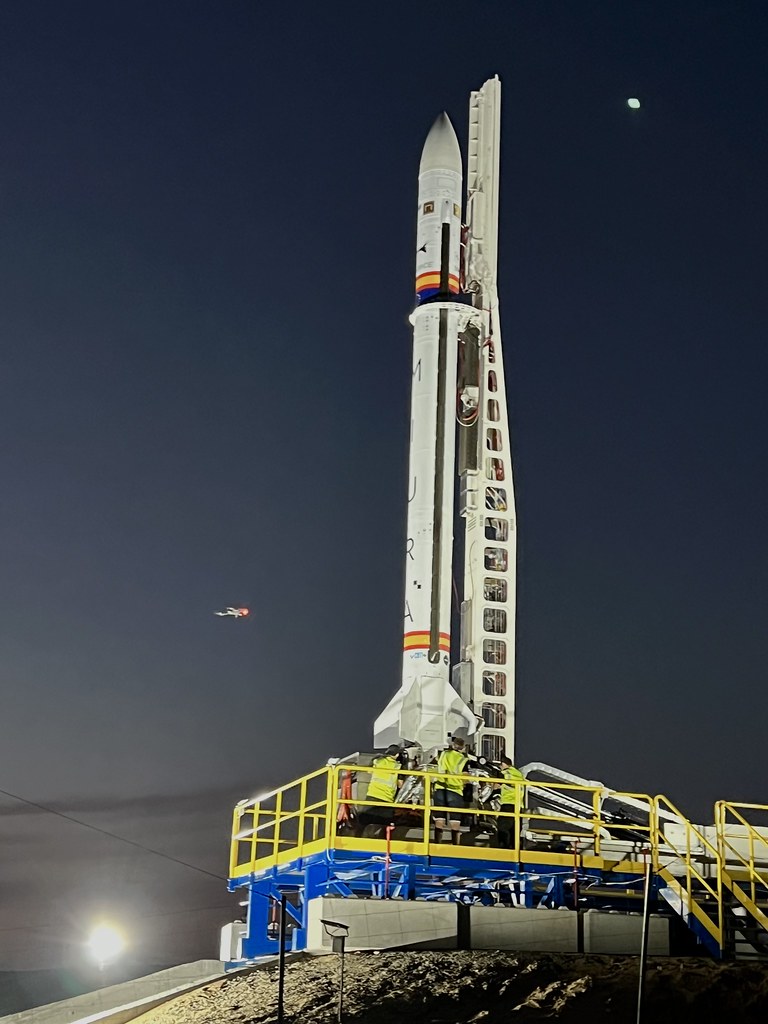The launch of the Miura 1, the first Spanish space rocket, from different angles
In the early hours of Saturday, October 7, the Spanish space company PLD Space finally managed to launch its Miura 1 rocket.
As I already explained to you in May, the Miura 1 is an unmanned, suborbital rocket with a single phase (that is, it does not separate into several sections during launch, as do the large rockets of NASA and other space agencies) and is powered by a single TEPREL engine, fueled by a mixture of kerosene and liquid oxygen. The rocket has a length of 12.7 meters, a diameter of 70 centimeters and a mass of 2,550 kg. A small size compared to other space rockets, but logical if we take into account that it is the first launch of a Spanish space rocket, built at the initiative of a Spanish company: PLD Space.

The place chosen for its launch was the El Arenosillo Experimentation Center , in the province of Huelva, belonging to the National Institute of Aerospace Technology (INTA), an entity dependent on the Ministry of Defense. It is an ideal place due to its good weather conditions compared to other places in Spain.

This Saturday's launch was a test flight, SN1. Due to weather conditions, there was a launch window from 02:00 to 10:00 CET. Finally, the rocket was launched at 02:19 CET According to Raúl Torres, CEO and co-founder of PLD Space, some changes were made to the planned trajectory of the rocket: "we reached a height close to 50km, compared to the 80km initially planned". This change was made for safety, in order to "mitigate the affected area in case of vehicle failure", and to "avoid increasing the aerodynamic load too much." To achieve this, the engine thrust time was reduced from the planned 122 seconds to 103 seconds.

Finally, the launch was a complete success, allowing PLD Space to open the doors to its next project: the Miura 5, a larger rocket for orbital flights. Its dimensions will be larger than those of the Miura 1: 29.4 meters in length by 1.8 meters in diameter, it will have two or three stages and will be able to put a load of up to 300 kilograms into orbit. For Spain it is a source of pride that private initiative, combined with INTA infrastructure, has been able to develop this project that opens up an enormous horizon of possibilities for our country in the field of the space industry.
Yesterday, the Spanish YouTube channel Mission Control, which has been following everything detail this space program, published a video showing the first launch of the Miura 1 from different angles:
Congratulations to PLD Space for this success. I hope it is just the first of many more.
---
Photos: PLD Space / Manuel Mazzanti.
|
Don't miss the news and content that interest you. Receive the free daily newsletter in your email: Click here to subscribe |
- Lo más leído
- A British fairytale ruin: the abandoned shoe house on the Isle of Wight
- The interior of the Statue of Liberty torch and the sabotage that canceled its visits
- A virtual tour of ancient Rome in full color, just as it was in its heyday
- The supermassive black hole of Phoenix A, the biggest known light-devouring monster
- The unknown Soviet female cosmonaut who died on a mission: history or hoax?
- A large collection of Volkswagen cars hidden in an abandoned mine in Switzerland
- An old Soviet military plane abandoned from 1971 on a Russian island near Alaska

 ES
ES





Opina sobre esta entrada: